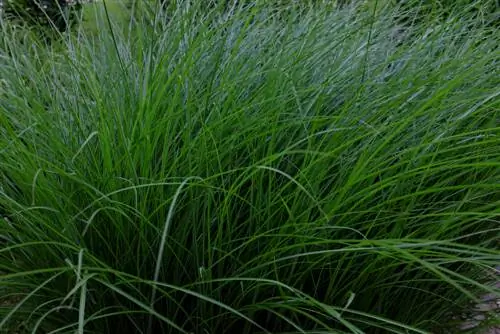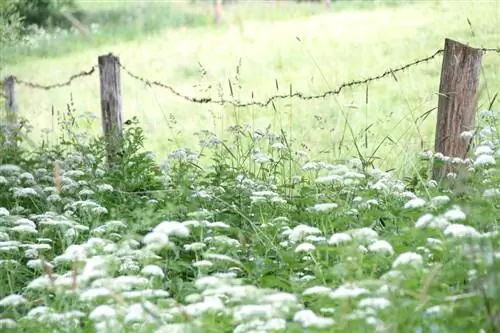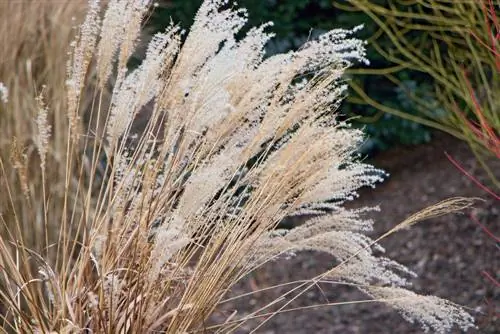- Author admin [email protected].
- Public 2023-12-25 17:45.
- Last modified 2025-01-23 11:22.
The miscanthus 'Eulalia' (bot. Miscanthus sinensis Gracillimus) is one of the particularly decorative varieties with a very attractive autumn color. It was bred many years ago by a renowned breeder and is often planted in private gardens.

When is a root barrier necessary for miscanthus 'Eulalia'?
A root barrier is usually not necessary for miscanthus 'Eulalia', as it grows in clumps and does not form long root runners. In exceptional cases, such as when there is a risk of damage to pipes, a root barrier can be useful and should be used when planting.
When does a root barrier make sense?
With Miscanthus 'Eulalia', a root barrier, also known as a rhizome barrier, is actually not necessary. This reed is one of the clump-growing, i.e. mostly compact, varieties. However, if the Chinese reed feels very comfortable (warm weather and sunny location), then the roots become very strong and the reed spreads quickly.
The roots can cause damage to underground pipes and cables, but can also damage paved paths or pond liners. In such cases, setting a root lock makes perfect sense. It's best to do this right when planting.
Can I set a root barrier later?
Installing a root barrier later requires a lot of work, but is certainly possible. Since the miscanthus “Eulalia” usually does not develop long root runners (rhizomes), you can usually do without this feat. Instead, keep an eye on the reeds and divide them if they get too big.
How do I set a root barrier correctly?
A special root barrier is associated with some costs. Alternatively, you can also use an old mortar bucket (€38.00 on Amazon) or a plastic rain barrel. However, you should remove the soil beforehand and water the reeds regularly later.
Dig a larger hole for planting your miscanthus. The extent and depth depend on the barrier used. It should still protrude a few centimeters from the ground. Fill in soil and plant the Miscanthus. Then it should be watered well.
The most important things in brief:
- horstly growth
- Root barrier only required in exceptional cases
- Simple alternatives to the special rhizome barrier: mortar bucket or plastic rain barrel (each without bottom)
- It's best to use it right away when planting
- later use of the rhizome barrier is difficult
- Be sure to water Miscanthus with a rhizome barrier regularly






